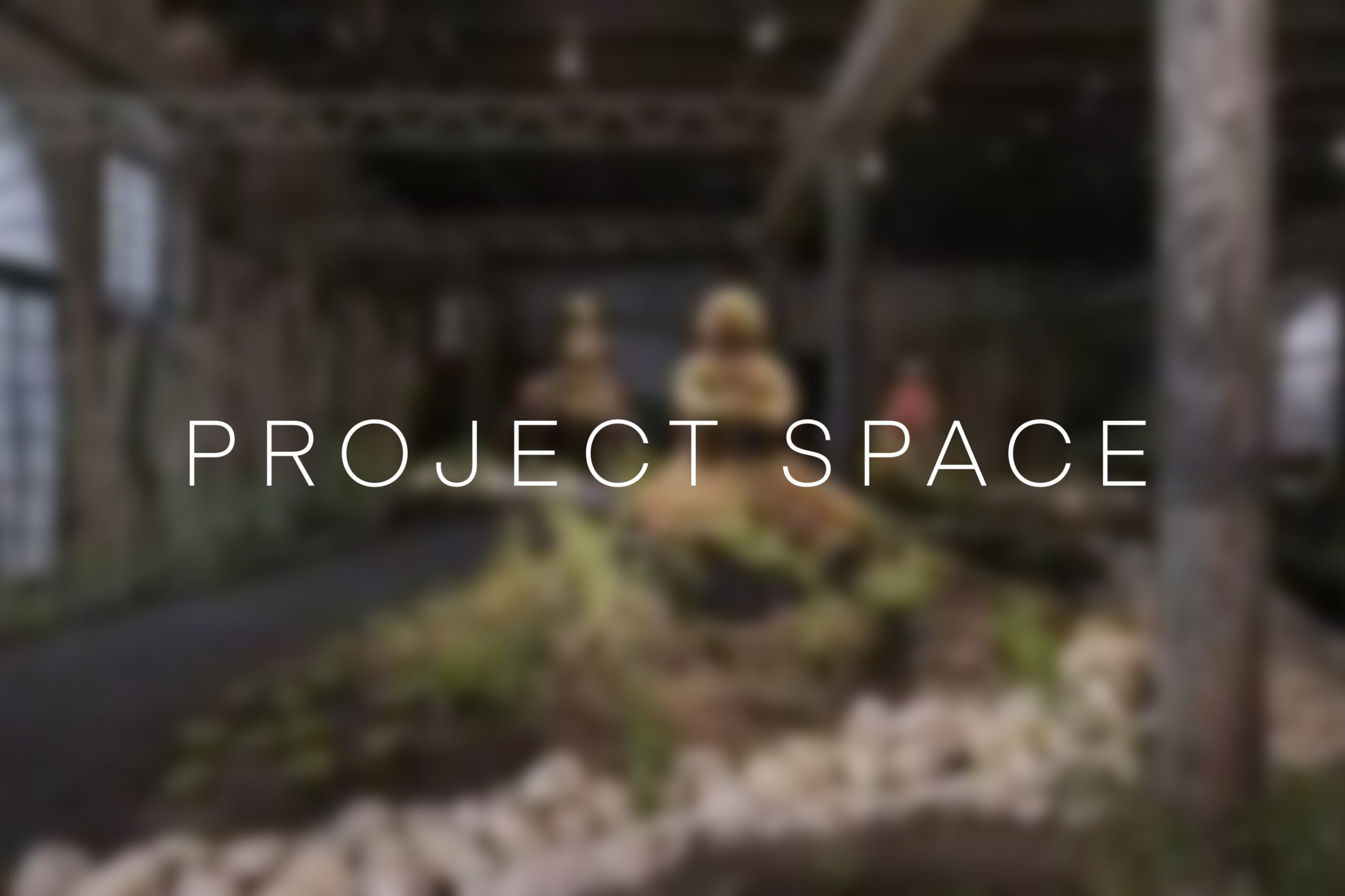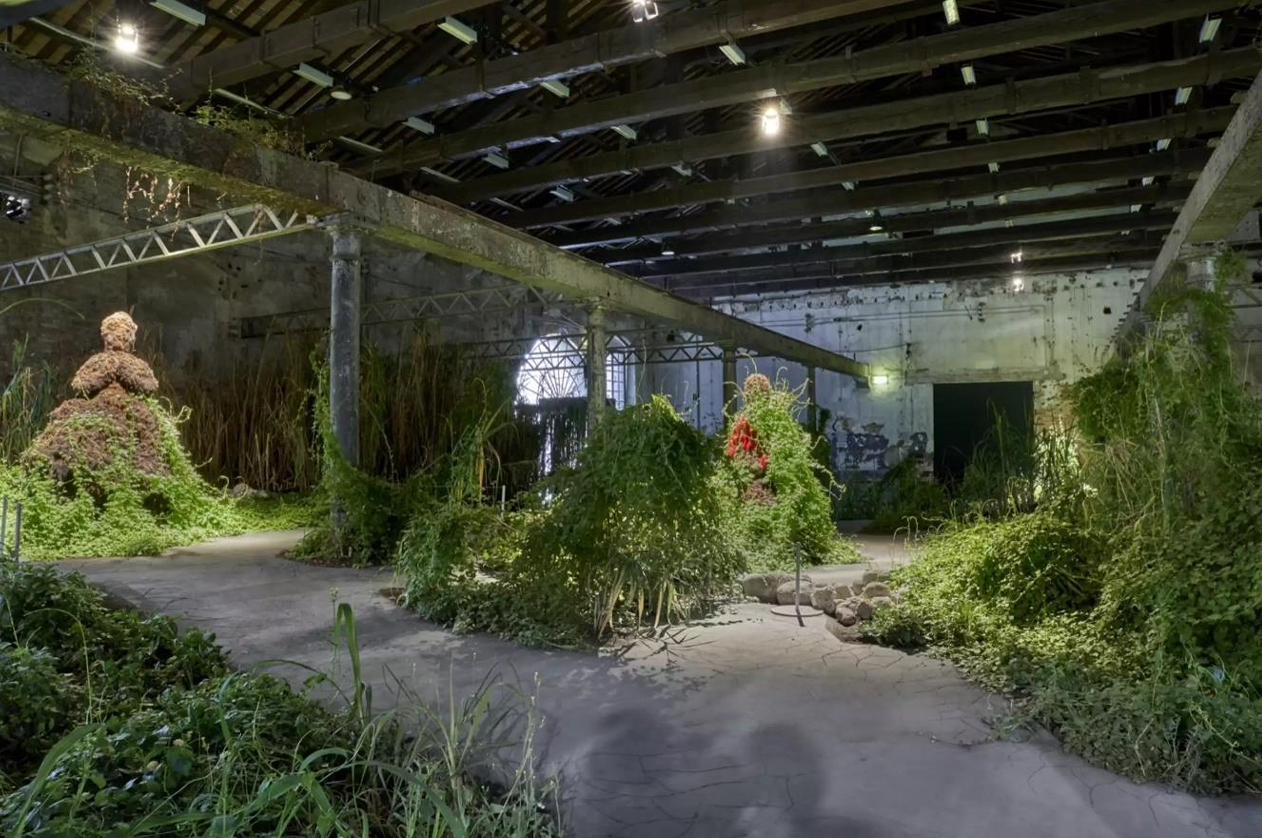Week4 – Project Space: Decolonising the White Cube

Introduction.
After the week 4 lecture, presented by Talbot Rice Gallery Curator James Clegg, I reappraised my notes and noted that he advised becoming familiar with the location of our curatorial projects. Being aware of the limitations of the space, as well as the history/context of the architecture could all have implications as to how the works of art can exist in the space, and how the audience receives the pieces of art. In this blog post I will discuss the requirements of space that I will need to consider as informed by research.
Venice Biennale.

Precious Okoyomon, To See the Earth Before the End of the World (2022), Installation , Venice Biennale, Italy (image sourced from: https://www.artsy.net/article/artsy-editorial-precious-okoyomon-ushers-dirt-blood-butterflies-venice biennale)
After the week 1 seminar discussion on Small visual arts associations versus Bienalles, and knowing that I want to curate a project focused on ecology I looked at the 2022 exhibition Milk of Dreams, curated by Cecilia Alemani and the piece occupying the main gallery To see the World Before it Ends by Precious Okoyomon. This piece features dirt figures representing humanoid shapes amongst winding mazes of water and soil. Okoyomon discusses the human earth sculptures as possible images of future people, engaging with the idea of humans and nature evolving together into a symbiotic organism. I believe that this is reflected in the choice of space used to exhibit this piece. The work of Okoyomon features a diverse array of plant life spanning the entirety of the space, which is contrasted by the industrial appearance of the gallery space with stone walls, and a combination of metal and stone structural columns. The effect of this is an environment that conceptually echoes the intention of the artist’s work. The manmade space combines with the natural appearance of the artwork to constitute the artistic experience.
I mentioned in my previous post on accessibility that the white cube gallery is an exhibition arrangement that, due to its minimalism, focuses the attention of an audience to the artwork. But, due to the prevalence of this form of display it has also become intensely familiar to us. I believe that this bears relevance to Philosopher, Martain Heidegger’s notion that being isn’t present. Heidegger expresses this with two terms: ‘Vorhanden’, meaning present-at hand, and ‘Zuhanden’, meaning ready-to-hand. Heidegger used these terms in reference to the way that we perceive and engage with tools (p.98, 1927). In one of his most famous examples, he explains that when using a hammer, it is ready-to-hand, that is, we regard the hammer as something to complete a task, and thus, do not physically examine or acknowledge it and so it becomes transparent in the completion of a goal. It is only when the hammer breaks, no longer able to fulfil its role that it becomes present-at-hand, our attention is directly focused on the physical body of the object (Heidegger 1927). Ecologist Philosopher Timothy Morton expands on this with an alternative scenario, explaining how when staying in a hotel the physical quality of the environment brings the features of the room to the forefront of consciousness to be present-at-hand. Here Morton expands these concepts beyond just tools and objective goals, to our personal familiarity with the space (2021, p.9). Phenomenological Art researcher Deborah Harty further corroborates, and subtlety diversifies this account. Though not directly referencing Heidegger, she suggests that personal familiarity lets elements of the world fall into the background of perception, but any deviation from expectation brings the materiality of the experience to the focus of our perception. Hence, whether an intended element of the art or not, the deviation of the main gallery space in the Milk of Dreams exhibit away from the expectation of the white cube aesthetic, automatically implicates the space as having a role within the artistic experience.
Application to Individual Speculative Project
Decolonising the exhibition space to create, not only, a more accessible experience within the exhibition, but one that does not rely on the conventions of modernism will inevitably enhance the implications of the project space on the perception of art shown in conjunction. As a result, the space chosen as a setting for the speculative project will have to be precise, prioritising a: decolonial, non-conventional, accessible space. Additionally, I will be completing follow up research to ascertain how the architectural elements of space impact the perception of art.
Bibliography
- Alemani, C (2022). The Milk of Dreams, 2022. [online] Available at: https://www.ceciliaalemani.com/projects/the-milk-of-dreamsniversity Press. [Accessed 18 Nov. 2024].
- Alemani, C. (2022). The Milk Of dreams. In: La Biennale di Venezia 59 International Art Exhibition.
- Dozier, A. (2022). Precious Okoyomon Ushers Dirt, Blood, and Butterflies into the Venice Biennale. [online] Artsy. Available at: https://www.artsy.net/article/artsy-editorial-precious okoyomon-ushers-dirt-blood-butterflies-venice-biennale, [Accessed 10 Feb. 2024].
- Fotiadi, S(2024). Multisensory Technologies for Inclusive Exhibition Spaces: Disability Access Meets Artistic and Curatorial Research. Multimodal Technologies and Interaction, 8(74), pp.1-16.
- Harty, D. (2015). Trailing Temporal Trace. In: P. Sawdon and R. Marshall, eds., Drawing Ambiguity. I.B.Tauris, pp.51–65.
- Heidegger, M. (1927). Being and Time. Translated by J. Macquarrie. and Translated by E. Robinson. Oxford: Blackwell.
- Morton, T. (2021). All Art Is Ecological. S.L.: Penguin Books.



